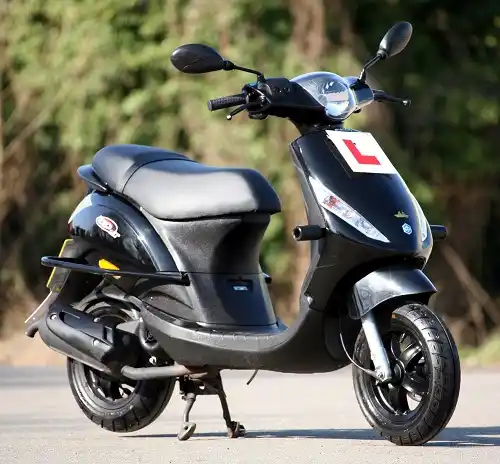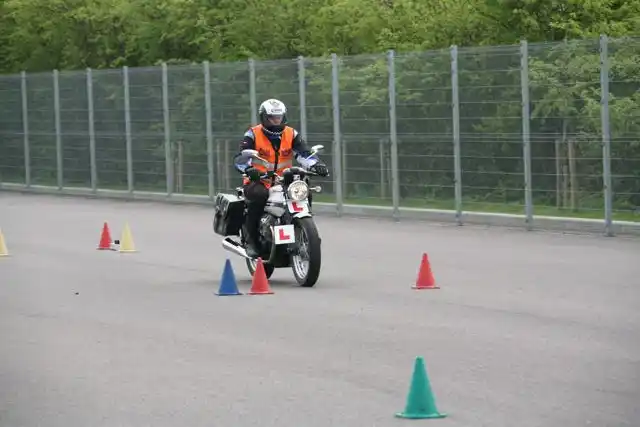Book motorcycle training in Carrickfergus, County Antrim with any of the companies listed here
Click on any of the motorcycle training schools below to view more information and check availability.
TNT Rider Newton Stewart
New Galloway Road, Newton Stewart, Dumfries and Galloway, DG8 6AW
Approx. distance: 55.7 miles
Fastrak Motorcycle Training Ayr
18 North Harbour Street, Ayr, South Ayrshire Council, KA8 8AA
Approx. distance: 69.3 miles
Pegasus Bike Training Ayr
Bookers Cash & Carry Park, Ayr, Strathclyde, KA8 9DJ
Approx. distance: 70.9 miles
Cumbria Motorcycle Training Workington
Moorclose Community Centre, Needham Drive, Workington, Cumbria, CA14 3SE
Approx. distance: 90.8 miles
Bike It Motorcycle Training Paisley
53 Clark Street, Paisley, Strathclyde, PA3 1RB
Approx. distance: 95 miles
Harleys Rider Training Glasgow
2 Glenburn Road, East Kilbride, Strathclyde, G74 5BA
Approx. distance: 95.9 miles
Loch Lomond Motorbike Training Dumbarton
Unit 5 Sandpoint Marina, Dumbarton, Strathclyde, G82 4BG
Approx. distance: 97.2 miles
Biker School Glasgow
345 Renfrew Road, Glasgow, Glasgow City, G51 4SW
Approx. distance: 98 miles
Real Rider Motorcycle Training Barrow in Furness
Vickerstown Foolball Club, Mill Lane, Barrow in Furness, LA14 3NN
Approx. distance: 111.3 miles
Lothian Motorcycle Training Bathgate
14e Blackburn Road, Bathgate, Lothian, EH48 2EY
Approx. distance: 117.7 miles

BookCBTNow - Book motorcycle training in Carrickfergus, County Antrim
Do you need motorcycle training in Carrickfergus or nearby in Greenisland, Merville Garden Village and Holywood? Then you have come to the right place. Here at Book CBT Now, we can provide some of the best companies for you to get the training you need. We have many years of experience in this field and have become one of the most trusted sources of online booking for motorcycle training companies.
What are the different types of motorcycle licence I can get in Carrickfergus?
There are 4 main types of full motorcycle licence issued by the DVSA. The first three (AM, A1 and A2 motorcycle licences) have restrictions on the type of moped or motorcycle you can ride, the fourth (the full A motorcycle licence) has no restrictions.
The AM restricted moped licence
The A1 restricted motorcycle licence
The minimum age to take this test is 17. According to the DVSA website it will allow you to ride a "Light motorcycle up to 11 kW (and a power-to-weight ratio not more than 0.1 kW per kg) and 125 cc". This means it's up to a 125 cc motorcycle with some restrictions to make sure it cannot accelerate too fast - a really good idea when you are new to riding a motorbike!
Requirements to take the A1 motorcycle test - You must have a UK provisional or full driving licence, a valid theory test certificate and a valid CBT certificate. Once you have taken this test you will not have to keep renewing your CBT certificate every 2 years, you can ride on motorways and you can take a pillion passenger on the back of your motorbike.
The A2 restricted motorcycle licence
For this licence you need to be at least 19 years of age, have completed your CBT or have had an A1 licence for at least 2 years. As with the A1 test you also need to have a UK provisional or full driving licence and a valid theory test certificate . The main benefit of getting an A2 licence is you can ride a more powerful motorcycle. The law states a "standard motorcycle up to 35 kW (and a power-to-weight ratio not more than 0.2 kW per kg)". So it's a more powerful bike, but still not completely un-restricted. To find A2 legal motorbikes you are best visiting your local motorcycle dealer and asking them to show you the A2 legal bikes, as otherwise it's very difficult to work out just looking at the tech specs.
The full A motorcycle licence, or DAS licence.
This is the licence that allows you to ride almost any motorcycle without restrictions, so it's the ultimate motorcycle licence. No limits on power outputs or power per kg or engine size! It is also called a 'DAS' licence as it can be obtained from the 'Direct AccesS' route. There are two ways you can get this licence:
1) If you are 24 or over you can take the tests for an A licence. You must also have a UK provisional or full driving licence, a valid theory test certificate and a valid CBT certificate.
2) If you are at least 21 years of age and you have held an A2 category licence for at least 2 years. This is sometimes referred to as the 'progressive access' route as you progress from one licence to another.
When taking the test the biggest difference is that you have to use a bigger, more powerful motorcycle. It will have a power of at least 40kw and an engine cc of at least 595 cc. Your local training school will make sure you have the right size bike for your test.
There is also a flowchart (click here) that the DVLA have produced that shows these different licences and how to obtain them.
To get more detailed guidance on what licence is right for you then talk to your local motorcycle training school. You can search for them here and they are qualified to speak to you on the right type of training for you.
How do I get the right training in Carrickfergus for the AM moped licence?
The AM moped licence is a restricted licence you can get when you are 16 or over. You can ride a moped of up to 50 cc and a top speed of 28 mph without Learner plates and you may carry a pillion passenger. If all you ever want to rider is a moped then this licence may be right for you. It is essential that you get the right training for this licence as without it you are likely to hurt yourself or even worse, someone else. Use this website to enter your postcode and search for your local motorcycle training school. They are all fully qualified to advise you on the training you will need. Although saving money is something everyone wants to do, the right training will save your life. Therefore don't just focus on price, look at the quality of training on offer and the standard of training.

What training is available after I have my licence?
You might think that once you have your licence that will be the end of motorcycle training. However, there are may good reasons why you might want to take additional training after you have passed your test, and there is plenty of additional training available.
The Enhanced Rider Scheme (ERS)
This scheme was devised by the DVSA and the motorcycle industry. The ERS course is run by many motorcycle training companies around the UK. It is for anyone who has a full motorcycle licence and wishes to check their safe riding skills. Not only will it make you a better rider but some insurance companies offer cheaper motorcycle insurance if you have been issued with a DVSA Certificate Of Competence. You will receive this certificate at the end of your ERS course if the instructor deems you to be a safe rider. If the instructor feels you need additional training it may be given on the day, or if it is felt you need a larger amount of training then you may need to come back on another day. Although ERS is not a test it is much like a CBT: provided you demonstrate a safe level of riding and knowledge during the day then you will be issued with your certificate. You can view a short video about ERS here.
BikeSafe
Spend a day with a police motorcyclist and without any danger of being arrested! Yes, the police force run training days for any rider who has a full motorcycle licence. The day involves some classroom theory as well as on road riding assessments. You will ride with a police motorcyclist and other riders on the same course as you. There is no test at the end of the day, it's designed to be enjoyable, interactive and above all to make you a better rider. For more information on BikeSafe courses and availability click here.
Advanced Training
Most motorcycle training companies offer advanced training, you can search for your local motorcycle training company here. Advanced training covers a wide range of subjects including progressive riding, advanced cornering, carrying a pillion passenger and motorway riding.
Rusty Riders
So you learnt to ride a motorcycle a while ago and have taken a break? Not sure how to get back on a bike? Not sure of all the new type of motorcycles available now and need some advice? They all go under the term 'rusty riders' meaning it's been a while since you last rode a bike and you need some help. Contact your local motorcycle training company to ask them about training for returning to biking.
Motorcycle maintenance
You may be able to ride a motorcycle perfectly but do you know how to look after one? What about that chain - how often should you lube it and when should you re-tension it? What about the suspension? Altering the stiffness of the suspension? Checking the oil level? Yes, these are all things you will need to know to look after your lovely new motorcycle or moped. There are some motorcycle training companies that run motorcycle maintenance courses. Just contact your local motorcycle training school and ask them about motorcycle maintenance.
What can I ride in Carrickfergus when I am 16?
When you are just 16 years of age your choices are more limited. There is a special category of licence called the 'AM' licence (derived from 'A' licence for 'M'opeds) that you can take when you are just 16 years old. You can of course, take it when you are older too, but it's the only full license available if you are under 17 years of age. You will still need to do all of the components of a full motorcycle test, namely your theory and hazard perception tests, your compulsory basic training (CBT), your module 1 off road test and your module 2 on road practical test.
This licence allows you to ride a moped of 50 cc or less which has a top speed of 28 mph, with a passenger and without Learner plates. If you are only interested in riding a moped and nothing more then this licence could be right for you. If you want to ride a more powerful motorcycle then you might find it better to wait until you are 17. From the age of 17 onwards you can take the A1 motorcycle test which allows you to ride motorcycle up to 125 cc and with some restrictions on its power to weight ratio.